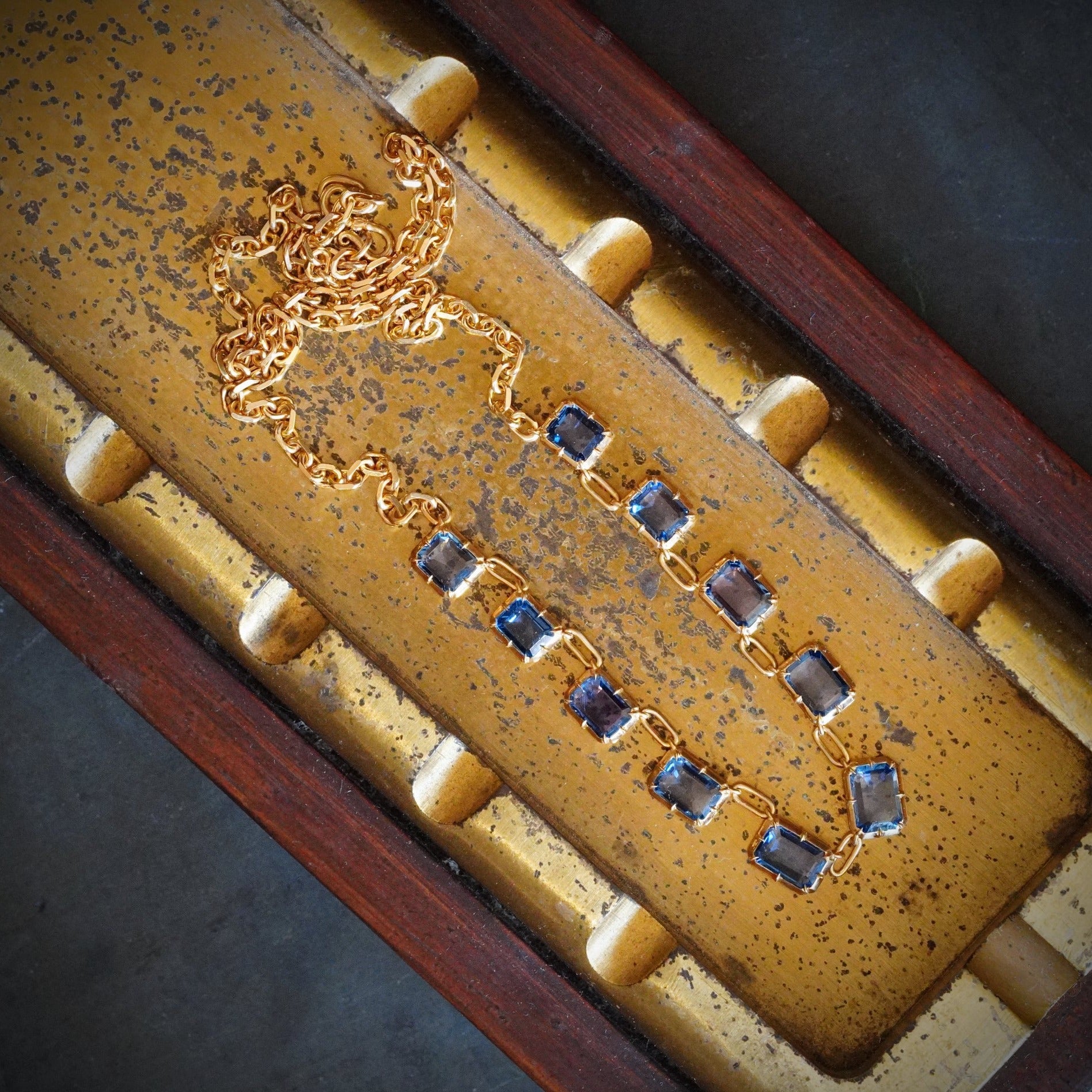
Radiant Blues and Beyond: How to Choose the Best Montana and Yogo Sapphires
Montana sapphires and Yogo sapphires are true American gems, celebrated for their natural beauty and rarity. These sparkling sapphire treasures, found exclusively in the rugged landscapes of Montana, are the only commercially mined sapphires in the United States. Whether you’re drawn to the vibrant colors of Montana sapphires or the exquisite cornflower blue of Yogo sapphires, these stones offer something extraordinary.
In this guide, we’ll explore the interesting history, distinct characteristics, and key factors to consider when purchasing one of these remarkable gemstones.
What Are Montana Sapphires and Yogo Sapphires?
Montana sapphires refer to any sapphires found within the state of Montana, while Yogo sapphires, though also from Montana, come specifically from the Yogo Gulch deposit, renowned for producing sapphires with a striking cornflower blue color (defined as a moderate purplish blue).
Otherwise, Montana sapphires exhibit the same remarkable properties as sapphires found worldwide. These gemstones are a variety of the mineral corundum, which derives its captivating blue hues from trace amounts of iron and titanium. When these elements are present in just the right concentrations, they interact with light to create the beautiful blue colors sapphires are known for, ranging from soft sky blues to deep, vivid blues.

Sapphires are also known for their exceptional hardness—ranking 9 on the Mohs Scale of Mineral Hardness—which is second only to diamonds in durability. This makes sapphires highly resistant to scratching and fracturing, qualities ideal for everyday wear and cherished fine jewelry.
History and Geology of Montana Sapphires
The discovery of sapphires in Montana dates back to 1865 when gold prospectors stumbled upon the gemstones in the gravel beds of the Missouri River. Initially, sapphires were considered waste by miners focused on extracting gold, as there were no nearby facilities to cut and polish these precious stones. Today, this area produces some of the largest Montana sapphires, with specimens up to 20 carats not being uncommon.
Other key deposits were soon discovered in Rock Creek and Dry Cottonwood Creek. These areas are known for producing sapphires with light colors but often exhibit high clarity, making them ideal for faceting and polishing. While mining these sapphires was initially unprofitable, heat treatment methods later transformed their marketability, enhancing their color and desirability.
The exact geological origins of these sapphires remain a mystery. Some experts theorize that they may have been carried downstream from ancient sapphire-bearing mountains that have long since eroded. Others suggest glaciers may have transported these gems over long distances. Despite the unknown source, Montana sapphires are highly valued for their beauty and the variety of colors they offer.
Yogo Sapphires: The Cornflower Blue Gems
Yogo sapphires are unique because they form in igneous rock rather than river gravel. This allows miners to go directly to the source to extract these gems.
Unlike other Montana sapphires, Yogo sapphires are prized for their deep cornflower blue color, which does not require heat treatment. These stones are generally smaller, with most weighing under 0.5 carat, but their natural color and lack of color zoning make them highly sought after by collectors.

An original Renaissance-inspired Jogani ring featuring a 0.51-carat, cobalt-blue Montana sapphire sourced from the renowned Yogo Gulch Mine set in 18-karat yellow gold.
Yogo sapphires also have an interesting place in history. In the 1980s, a rumor suggested that Princess Diana’s iconic engagement ring featured a Yogo sapphire, a story that likely started to boost the stone’s popularity. Though unconfirmed, this marketing ploy helped elevate Yogo sapphires’ profile among gemstone enthusiasts.
Today, the Yogo Gulch mine is inactive, making these stones even more expensive and rare. However, the source rock is not yet depleted, meaning more Yogo sapphires might still be mined in the future.
What to Look for When Buying Montana and Yogo Sapphires
Color
Montana Sapphires: About 15 percent of Montana sapphires from the Rock Creek deposit have marketable colors before heat treatment, including blue, yellow, and pink. However, like many sapphires, they often have a “steely-gray” undertone. Some Montana sapphires also exhibit color change, shifting from blue in daylight to violet in incandescent light.
Yogo Sapphires: Yogo sapphires are famous for their rich cornflower blue color, which is naturally present without any heat treatment. They rarely show color zoning (variations in color within a single gemstone often caused by changes in the concentration of trace elements during its formation), which enhances their desirability even further. Approximately 2 percent of Yogo sapphires show a deep purple hue, adding to their uniqueness.
Treatment
Montana Sapphires: The majority of Montana sapphires are heat-treated to improve their color. Heat treatment is a common and accepted practice for these gems, so be sure to ask whether the sapphire you’re considering has been treated.
Yogo Sapphires: These stones are not heat-treated, which makes their color even more valuable and sought after by collectors.
Clarity
Both Montana and Yogo sapphires can have inclusions, but Montana sapphires from river deposits typically have high clarity. In some rare cases, these stones may exhibit fine silk inclusions that produce asterism, a star effect, though this is uncommon as many are faceted rather than cut as star sapphires.
Size
Montana Sapphires: Large Montana sapphires can weigh up to 20 carats, although most gemstones are smaller.
Yogo Sapphires: These are usually smaller, with sizes over 0.5 carats being rare.
Montana sapphires and Yogo sapphires are exceptional choices for gemstone enthusiasts and jewelry collectors. While Montana sapphires offer a broad spectrum of colors and larger sizes, Yogo sapphires stand out for their perfect blue hues and rarity. Whether heat-treated or natural, both types of sapphires from Montana boast the durability and beauty that make them excellent investments. When purchasing these sapphires, look for high clarity, inquire about any treatments, and always prioritize certified gems to ensure authenticity.


